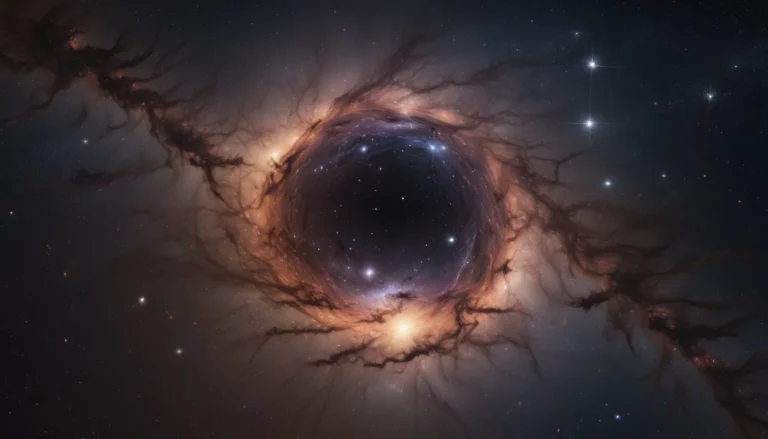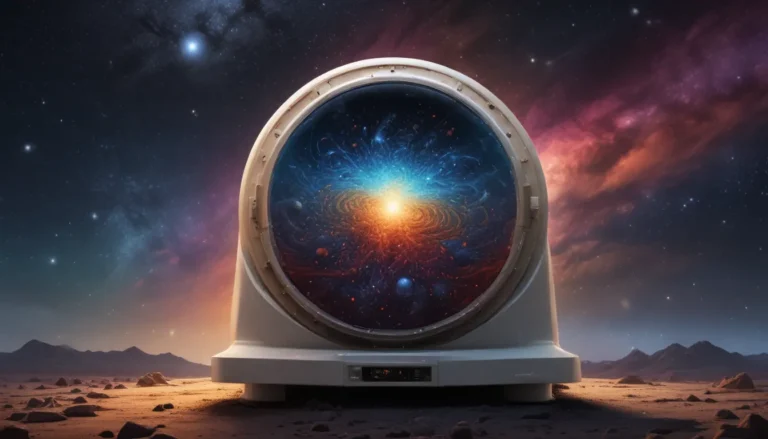The pictures we use in our articles might not show exactly what the words say. We choose these pictures to make you interested in reading more. The pictures work together with the words but don’t take their place. The words still tell you the important facts.
Have you ever wondered about the fascinating world of gravitational waves and the cosmic phenomena they reveal? Gravitational waves, cosmic ripples in space-time, have revolutionized our understanding of the Universe, offering remarkable insights into the mysteries that shape our cosmos. In this article, we will delve into the captivating realm of gravitational wave sources, exploring nine mind-blowing facts that will leave you in awe. From colliding black holes to merging neutron stars, these cataclysmic events not only generate gravitational waves but also provide a glimpse into the enigmatic nature of the Universe.
Key Insights:
- Gravitational waves are cosmic ripples produced by massive objects like black holes and neutron stars colliding, offering a window into the early Universe and dark matter.
- The LIGO observatories' detection of gravitational waves in 2015 confirmed Einstein's theory and sparked a rapid evolution in gravitational wave astronomy.
The Mystique of Gravitational Waves:
Gravitational waves are not just theoretical constructs; they are real ripples in the fabric of space-time caused by the acceleration of massive objects. These waves carry valuable information about their sources, enabling scientists to explore the Universe in an entirely new way.
The Power of Black Holes:
When two black holes merge, they unleash massive gravitational waves that can be detected on Earth. These mergers release an astonishing amount of energy, equivalent to several solar masses, in the form of gravitational waves, providing crucial insights into the cosmos.
Neutron Stars in Collision:
Neutron stars, dense remnants of supernova explosions, can collide, producing detectable gravitational waves. When two neutron stars orbit each other and eventually merge, they generate gravitational waves that observatories on Earth can identify.
The Historic Discovery of 2015:
In 2015, the Laser Interferometer Gravitational-Wave Observatory (LIGO) made the groundbreaking first direct detection of gravitational waves. This monumental discovery validated a key prediction of Albert Einstein's general theory of relativity.
Unveiling the Early Universe:
By analyzing the cosmic microwave background radiation and studying gravitational wave patterns, scientists can gain invaluable insights into the Universe's earliest stages post-Big Bang, expanding our knowledge of cosmic evolution.
Shedding Light on Dark Matter:
Dark matter, a mysterious substance comprising a significant portion of the Universe, remains elusive. By observing how gravitational waves interact with matter distribution, scientists can probe the properties of dark matter and its role in cosmic dynamics.
The Pivotal Role of LIGO Observatories:
Equipped with advanced laser and mirror technologies, the LIGO observatories in the United States have been instrumental in detecting even the slightest disturbances in space-time caused by gravitational waves. These observatories have significantly enhanced our comprehension of the Universe.
The Cosmic Sprint of Gravitational Waves:
Similar to light waves, gravitational waves travel at the cosmic speed limit of approximately 299,792 kilometers per second. This rapid travel allows information carried by gravitational waves to reach Earth from the farthest corners of the Universe.
The Thriving Field of Gravitational Wave Astronomy:
The field of gravitational wave astronomy has experienced exponential growth since the 2015 detection, with ongoing research and the development of new observatories unveiling further secrets of the Universe using these enthralling waves.
Exploring Cosmic Marvels:
As we continue to unlock the mysteries of gravitational wave sources, we embark on a journey to broaden our understanding of the immense Universe. The awe-inspiring facts surrounding these celestial events captivate both scientists and the general public, offering profound insights into the cosmic dynamics shaping our existence. With each revelation from black hole mergers to neutron star collisions, gravitational wave sources provide a portal to unrivaled cosmic knowledge.
Frequently Asked Questions:
-
What are gravitational wave sources?
Gravitational wave sources are cosmic events that create ripples in space-time, such as black hole collisions, neutron star mergers, or massive star births. -
How are gravitational waves detected?
Gravitational waves are observed using interferometers, specialized instruments that measure distance changes caused by passing gravitational waves, enabling scientists to infer wave existence and characteristics. -
Why are gravitational wave sources significant?
Gravitational wave sources offer unique insights into the fundamental nature of the Universe, allowing scientists to test theories like general relativity, study black hole and neutron star properties, and deepen our understanding of cosmic origins and evolution. -
Can gravitational waves be directly observed?
Gravitational waves cannot be seen directly as they do not interact with light or other electromagnetic radiation. Their existence is inferred through their impact on space-time. -
Are there ongoing efforts to study gravitational wave sources?
Initiatives like the LIGO and Virgo Collaboration continue to push boundaries in detecting and studying gravitational waves, expanding our knowledge of these cosmic phenomena and enhancing our understanding of the Universe.
Delve Deeper into Cosmic Wonders:
Gravitational waves are just the beginning of the captivating phenomena that shape our universe. Explore the explosive power of supernovae, cosmic events that outshine entire galaxies, or unravel the mysteries of cosmic strings, theoretical remnants from the early Universe with potential insights into fundamental physics. Journey into the enigmatic realm of primordial black holes, ancient cosmic relics holding clues to the origins of our cosmos. Each topic offers a unique perspective on the awe-inspiring marvels underscoring our understanding of the Universe.
Trust in Quality Content:
At Elisascience.org, we prioritize delivering reliable and engaging content that intrigues and educates our readers. Each fact shared on our platform is contributed by real users like you, ensuring a diverse range of insights and information. Our dedicated editors meticulously review all submissions to maintain the highest standards of accuracy and credibility. Rest assured that the fascinating facts we provide are not only captivating but also founded on authenticity and trustworthiness as you navigate the intriguing world of science with us.






